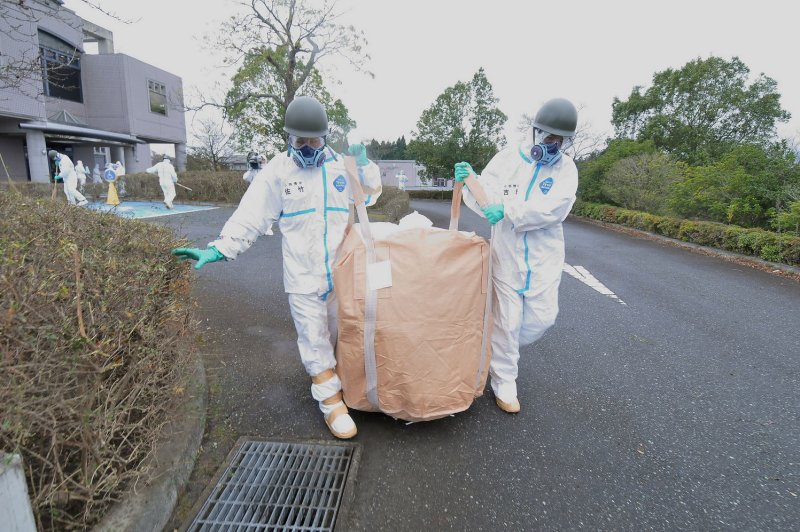Member of Japan's Ground Self Defense Force decontaminate at the city office of Tomioka Machi, 9 kilometers from the Fukushima Dai-ichi nuclear power plant in Fukushima prefecture, Japan, on December 8, 2011. About 900 members of Japan's GSFD started a two-week decontamination operation. UPI/Keizo Mori |
License Photo
Nuclear energy remains a taboo subject in the political discourse surrounding energy use and fossil fuels -- partly because of fears and uncertainty about the longterm safety and environmental consequences nuclear waste storage.
Research into several of the periodic table's fringe elements by scientists at Florida State could help alleviate some of these fears, as chemists have found one particular element, californium, to be particularly adept at bonding and separating other materials, and to be extremely resistant to radiation damage.
Californium, Cf, which lead researcher Thomas Albrecht-Schmitt calls "wicked stuff," could eventually be used to create nuclear waste storage tanks or even recycle radioactive fuel.
"It's almost like snake oil, it sounds almost too good to be true," Albrecht-Schmitt said. "This has real world application, it's not purely an academic practice."
Albrecht-Schmitt's work was assisted by theorists and scientists at nine other universities and institutes. The details of the elemental experiments were recently laid out in the journal Nature Chemistry.
Though Albrecht-Schmitt's revelations about californium's real world potential is promising, the element is currently prohibitively expensive, meaning researchers would need to figure out a cheaper way to make it, if it were to be put to more widespread use.
The 5.5 milligrams of californium used in the experiments was purchased from the Department of Energy's Oak Ridge National Laboratory for $1.4 million, using a Florida State endowment given in honor of retired professor Gregory Choppin.
[Newswise]















